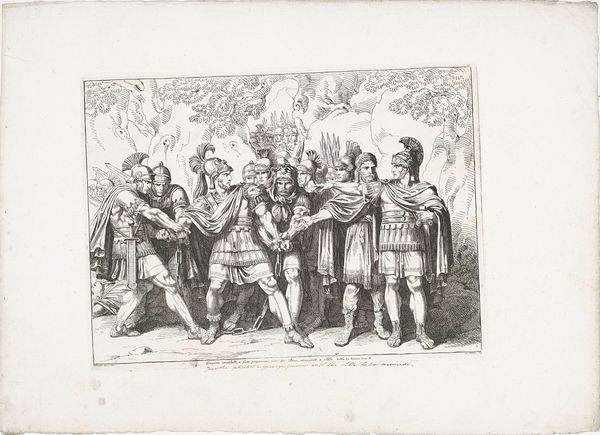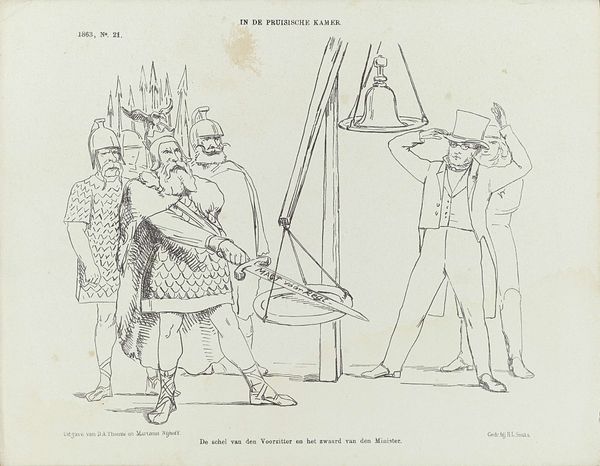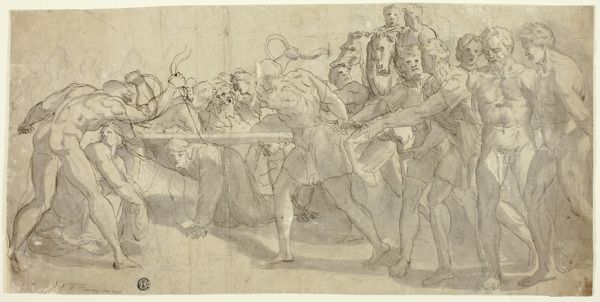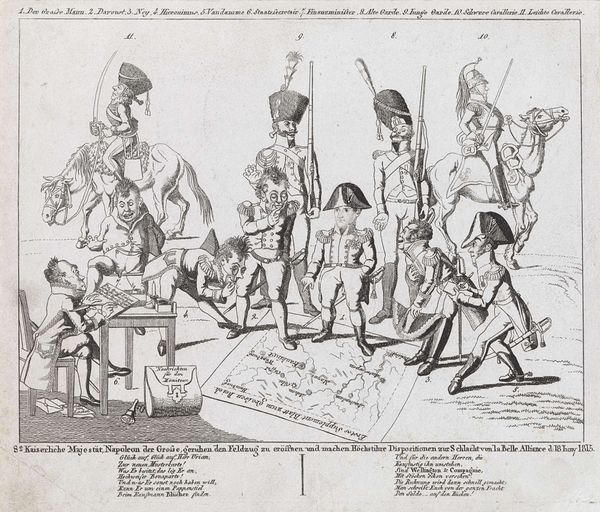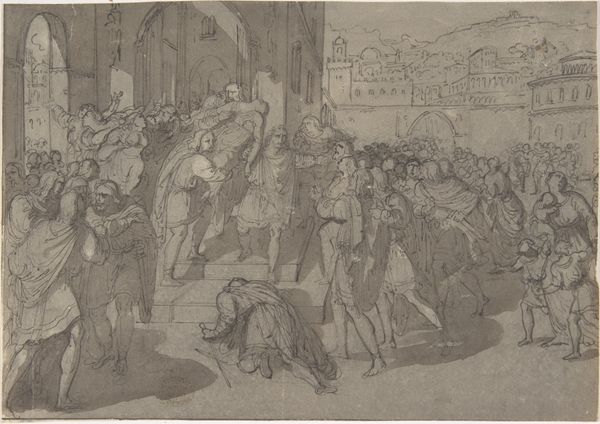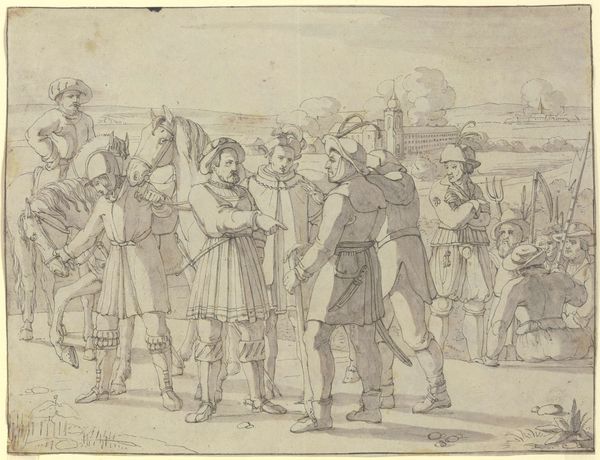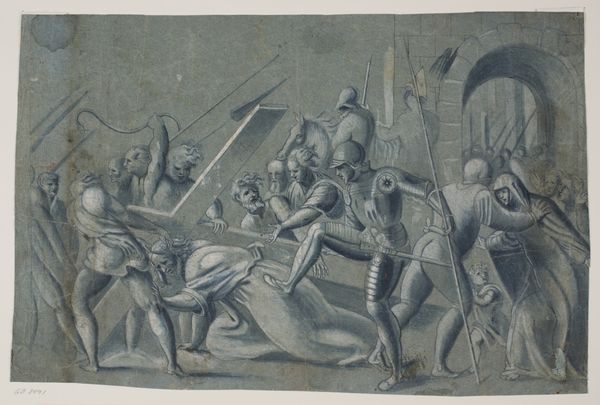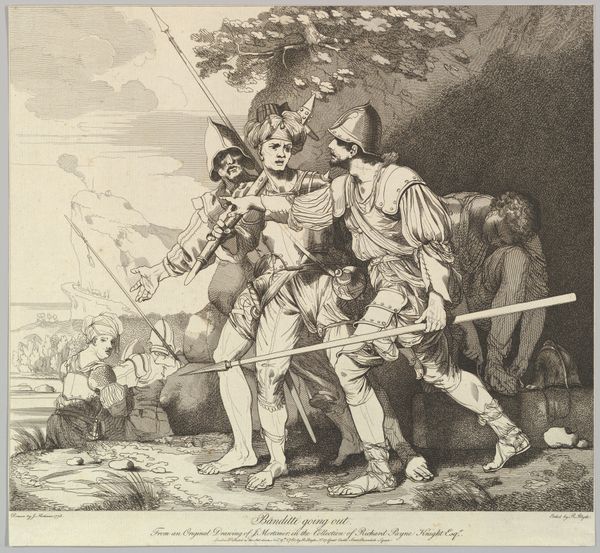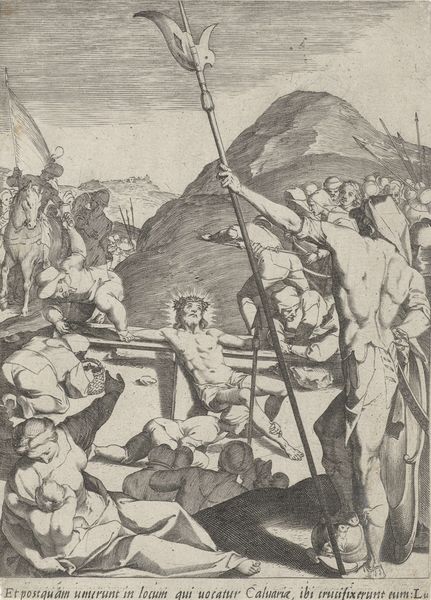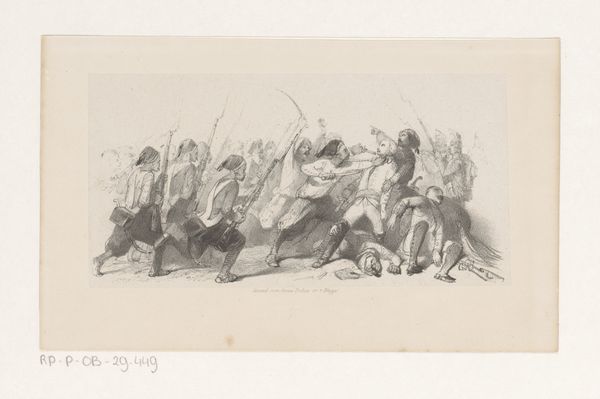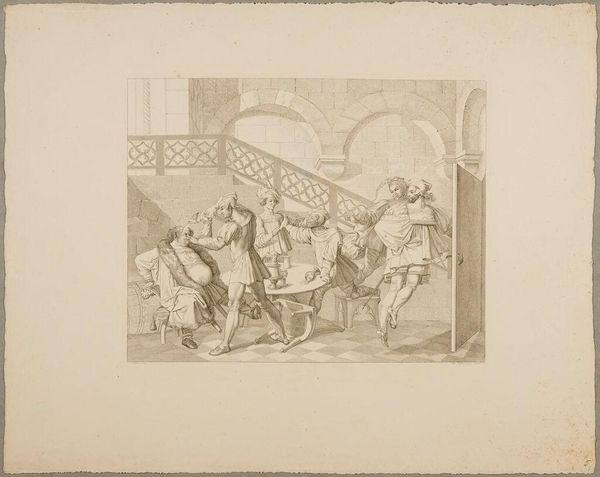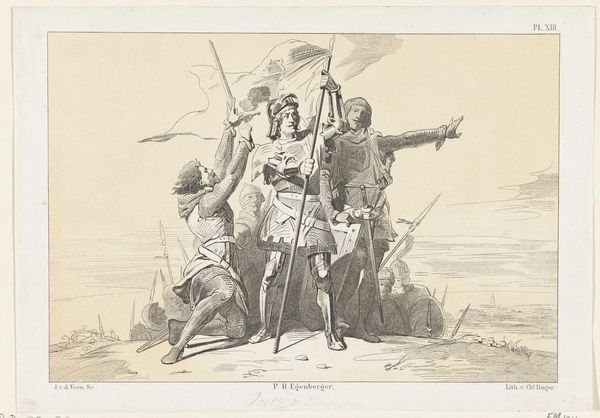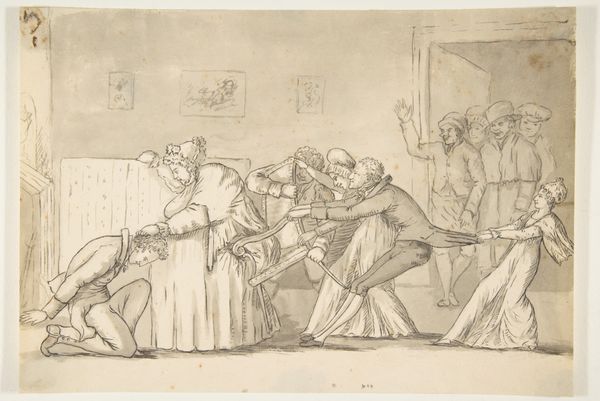
Station of the Cross No. 2: "The Cross is Laid on Jesus c. 1936
0:00
0:00
drawing, watercolor
#
drawing
#
medieval
#
narrative-art
#
figuration
#
watercolor
#
history-painting
#
watercolor
Dimensions: overall: 47.6 x 54.8 cm (18 3/4 x 21 9/16 in.) Original IAD Object: Approximately 30 x 50 in.
Copyright: National Gallery of Art: CC0 1.0
Curator: Geoffrey Holt created "Station of the Cross No. 2: 'The Cross is Laid on Jesus,'" a watercolor drawing dating around 1936. What are your first thoughts? Editor: Utterly charming, almost medieval in its earnest flatness, wouldn't you say? Those stylized figures, that determined little horse! I feel like I've stumbled into a children's book illustration with profound implications. Curator: Its style does echo medieval panel paintings and illuminated manuscripts. The narrative clarity and symbolic use of color, especially the emphasis on reds, highlight themes of sacrifice. Consider how Holt is positioning the viewer to align empathetically with the burden carried by Jesus. Editor: Right. It's the weight, isn't it? That palpable, crushing weight of the cross that seems to visually compress everyone underneath it. And yet there is a peculiar lightness, almost an optimism in the briskly striding figures flanking Jesus, like a village procession, more a celebratory affair. Or is that wishful thinking? Curator: Perhaps it is that optimism, but viewing this through the historical lens, one could examine the social context. Works such as these reflected a widespread search for moral clarity and spiritual solace. The Stations of the Cross provide a framework for understanding faith. This period of economic and political unease saw a renewed interest in these subjects. Editor: Yes, context shifts everything. The weight then feels less individual, less an isolated moment, and more reflective of that larger historical anxiety. I find myself captivated by the theatricality of it all. Each player in costume, if you will, acting out a role in a sacred drama. The scene is stylized with the trumpet almost blaring a tragic narrative in which we all become participants. It transcends mere illustration to embrace performance. Curator: Absolutely. It embodies an entire narrative, using visual shorthand to make accessible complex theology, inviting personal meditation while commenting on society. Editor: I see now! What began as quaint almost childlike on first glance deepens to embody echoes of something grander. Thanks to a well thought narrative and brilliant coloring of a well meaning, yet tortured, time period, and that trumpet player. Curator: A synthesis of the personal, the performative, and the historical! I couldn’t agree more.
Comments
No comments
Be the first to comment and join the conversation on the ultimate creative platform.
